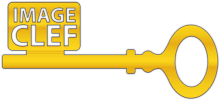- ImageCLEF 2025
- LifeCLEF 2025
- ImageCLEF 2024
- LifeCLEF 2024
- ImageCLEF 2023
- LifeCLEF 2023
- ImageCLEF 2022
- LifeCLEF2022
- ImageCLEF 2021
- LifeCLEF 2021
- ImageCLEF 2020
- LifeCLEF 2020
- ImageCLEF 2019
- LifeCLEF 2019
- ImageCLEF 2018
- LifeCLEF 2018
- ImageCLEF 2017
- LifeCLEF2017
- ImageCLEF 2016
- LifeCLEF 2016
- ImageCLEF 2015
- LifeCLEF 2015
- ImageCLEF 2014
- LifeCLEF 2014
- ImageCLEF 2013
- ImageCLEF 2012
- ImageCLEF 2011
- ImageCLEF 2010
- ImageCLEF 2009
- ImageCLEF 2008
- ImageCLEF 2007
- ImageCLEF 2006
- ImageCLEF 2005
- ImageCLEF 2004
- ImageCLEF 2003
- Publications
- Old resources
You are here
PlantCLEF 2025

multi-species plant identification in vegetation quadrat images
Schedule
- December 2024: Registration opens for all LifeCLEF challenges Registration is free of charge
- 1 March 2025: Competition Start
- 12 May 2025: Competition Deadline
- 31 May 2025: Deadline for submission of working note papers by participants [CEUR-WS proceedings]
- 23 June 2025: Notification of acceptance of working note papers [CEUR-WS proceedings]
- 30 June 2025: Camera-ready deadline for working note papers.
- 9-12 Sept 2025: CLEF 2025 Madrid - Spain
All deadlines are at 11:59 PM CET on a corresponding day unless otherwise noted. The competition organizers reserve the right to update the contest timeline if they deem it necessary.
Motivation
Vegetation plot inventories are essential for ecological studies, enabling standardized sampling, biodiversity assessment, long-term monitoring, and large-scale remote surveys. They provide valuable data for ecosystem analysis, biodiversity conservation, and evidence-based environmental decision-making.
These inventories typically consist of multiple quadrats, each about 0.5 square meters in size, where botanists meticulously identify all species present. Additionally, they quantify species abundance using indicators such as biomass, qualification factors, and the area occupied in photographs.
Integrating AI could greatly enhance specialists’ efficiency, expanding the scope and coverage of ecological studies.
Task description
The task will be evaluated as a multi-label classification task that aims to predict all the plant species on the high-resolution plot images. The main difficulty of the task lies in the shift between the test data (high-resolution multi-label images of vegetation plots) and the training data (single-label images of individual plants).
Data collection
The test set is a compilation of several image datasets of plots in different floristic contexts, such as Pyrenean and Mediterranean floras, all produced by experts. The training set is composed more conventionally of observations of individual plants, such as those used in previous editions of PlantCLEF. More precisely, it is a subset of the Pl@ntNet training data focusing on south western Europe and covering 7.8k plant species. It contains about 1.4 million images extended with some images with trusted labels aggregated from the GBIF platform to complete the less illustrated species. A second training dataset comprising hundreds of thousands unlabeled vegetation cover images will be made available (built from the LUCAS cover images dataset), aiming to facilitate the evaluation of self-supervised approaches.
| Single plant training set | Metadata | Pretrained models | Vegetation plot test set |
Rules
Using additional data or metadata is permitted on condition that for each run with external data, you submit an equivalent run with only the data supplied, to enable more accurate comparisons.
The training metadata file also includes a gbif_species_id, which can be used to find additional data on the GBIF platform, or to add images from the 2022 and 2023 editions of PlantCLEF. However, beware, species ids used during PlantCLEF2022&23 may have changed in the meantime as taxonomy is an active field of study and the plant identification platforms that contribute to GBIF are very dynamic. In addition, many active users are constantly improving the quality of identification on community platforms such as inaturalist or Pl@ntNet, and some images previously present in PlantCLEF2022&23 may have since been revised and changed species identification.
Self-supervised, semi-supervised or unsupervised approaches are strongly encouraged. Pre-trained models are provided.
Participation requirements
- 1. Subscribe to CLEF (PlantCLEF task) by filling this form
- 2. Go to the Kaggle's PlantCLEF 2025 challenge page and compete
Publication track
TBD
All registered participants are encouraged to submit a working-note paper to peer-reviewed LifeCLEF proceedings (CEUR-WS) after the competition ends.
This paper must provide sufficient information to reproduce the final submitted runs.
Only participants who submitted a working-note paper will be part of the officially published ranking used for scientific communication.
The results of the campaign appear in the working notes proceedings published by CEUR Workshop Proceedings (CEUR-WS.org).
Selected contributions among the participants will be invited for publication in the Springer Lecture Notes in Computer Science (LNCS) the following year.
Credit
This project has received funding from the European Union’s Horizon research and innovation program under grant agreement No 101060639 (MAMBO project) and No 101060693 (GUARDEN project).


| Attachment | Size |
|---|---|
| 2.82 MB |
